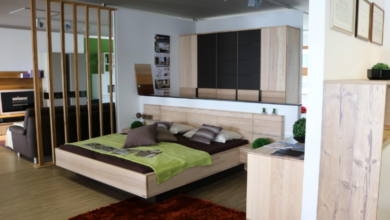How Material Quality Shapes Long Term Performance in Commercial Builds

High quality materials influence the life of a commercial building. They shape strength, safety, and the total cost of ownership. Many projects fail before their time because the wrong materials were used during construction or upgrades. When you take a long view, you see how stronger choices support smoother operations and lower maintenance. This article explains the role of material quality and how your selections shape long term performance in commercial builds.
The cost of cheap materials
Low grade materials often look fine at first. After installation, the problems start. Surfaces warp under heat or moisture, panels weaken under daily use, metal parts corrode, and coatings peel. Repairs begin earlier than expected. You spend more on labor and replacement. Downtime rises. Staff lose time responding to issues instead of focusing on core work.
Cheap materials often lack strong testing or performance data. When the stress of real use hits them, they fail in ways you did not plan for. That failure increases risk for building owners and tenants. Over time, you spend more money correcting problems than you saved during construction. This is why many facility managers choose materials that already have a strong performance record. For instance, builders who use Metpar toilet partitions get high quality materials and installation that significantly reduce future maintenance costs.
The long term cost gap grows larger every year. When you track maintenance over five or ten years, the difference between strong and weak materials becomes clear. Cheap options limit the life of the building but strong options support its value.
Key material properties that influence durability
Durability depends on the material’s core properties. Strong decisions start with clear evaluation of the qualities that fit the environment.
Strength and load bearing capacity determine how well a surface or structure handles daily use. Materials in high traffic areas need higher structural stability. Weak materials degrade faster and place weight on other parts of the building.
Moisture resistance matters in areas exposed to humidity, cleaning, or temperature shifts. Materials that absorb water expand, rot, or lose form. Moisture resistant surfaces stay stable and reduce cleaning issues.
Chemical resistance supports environments with regular disinfection. Cleaning agents break down some materials fast. That breakdown affects lifespan and creates safety issues. A chemical resistant surface stands firm under regular care.
Fire resistance supports safe building use and keeps projects compliant with required codes. Fire rated materials hold their form longer under heat. This improves evacuation time and protects structural parts.
Maintenance-friendly surfaces make cleaning simple and repairs easy when needed. Materials with smooth finishes or strong protective layers reduce labor. They also keep the building presentable and safe.
These properties determine how well the building functions day to day. When each material matches the demands of the space, long-term performance rises and overall cost drops.
See also: Top 10 Portable Monitors for Business Presentations
Impact on maintenance and lifecycle costs
Maintenance is one of the largest hidden expenses in a commercial building. Poor material choices push these costs even higher. When materials fail early, more labor is required. More parts need replacement. Maintenance staff must perform more checks, more patchwork, and more emergency fixes.
High-quality materials reduce the frequency of repairs. They last longer and need fewer interventions. As a result, the annual budget becomes more predictable. You also avoid unnecessary downtime as a building with stable surfaces stays open and safe for daily use.
Lifecycle cost matters more than the purchase price. A strong material may cost more at the start, but it gives you ten or twenty years of reliable service. A cheap one may break within five years and force full replacement. That difference affects the annual cost of the facility and the long-term value of the property.
When you compare lifecycle costs across several material categories, the same rule appears. Strong materials reduce total cost. Weak materials create more expense and more risk.
Safety and liability considerations
Material failure increases safety concerns. Panels that separate, surfaces that crack, and structures that shift create hazards. These hazards expose visitors and staff to risk. They also expose building owners to liability.
Stable materials support compliance across building codes. They hold their form longer, reduce safety events, and protect the quality of the structure. Durable materials also support better outcomes during emergencies. They resist fire, heat, impact, or corrosion depending on their design.
Insurance outcomes tie into material quality as well. Buildings with weak materials face a higher risk of damage, which may affect claims or premiums. Repairs caused by low-grade materials create a chain of additional risk. Strong materials limit this risk and support smoother coverage outcomes. Property owners who want a complete risk picture should review their commercial property insurance coverage and make sure their material choices align with their risk plan.
Environmental and sustainability benefits
High-quality materials support better sustainability outcomes. They last longer, which reduces waste. A surface that stays stable for ten years prevents repeated disposal and replacement, and this lowers the environmental impact of the facility.
Some materials also improve energy efficiency. Strong insulation materials, reflective surfaces, or high-performance cladding reduce heat loss or heat gain. These improvements lower operational energy use and support sustainable building goals.
Recyclable materials add another benefit. When a part reaches the end of its life, it returns to the supply chain instead of landfill. This strengthens corporate responsibility and supports compliance with green building standards.
Selecting the right material suppliers
Supplier selection shapes material success. Strong suppliers provide clear testing data and performance records. They maintain strict quality controls. They work with verified manufacturers who support long-term performance.
When evaluating suppliers, focus on certifications, warranties, and past projects. Ask for samples that show how the material performs in daily use. Review data on strength, fire resistance, chemical resistance, or moisture stability.
A reliable supplier also offers steady inventory and responsive support. When you need replacement parts, accessories, or guidance, they should respond fast. Long-term relationships with dependable suppliers improve project stability and reduce risk.
Conclusion
Material quality shapes the long-term life of a commercial build. Strong materials reduce maintenance, improve safety, and lower total cost. They support smoother operations and better outcomes for owners and users.
Every commercial project benefits from a clear review of material durability and supplier reliability. When you take time to select strong materials, you protect your building and strengthen its value. Property owners should also review their commercial property insurance coverage to align material choices with long-term risk management.



